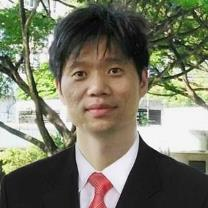Vortex Beams: Fundamentals and Applications
A special issue of Photonics (ISSN 2304-6732).
Deadline for manuscript submissions: closed (31 December 2022) | Viewed by 26758
Special Issue Editors
2. School of Physical Science and Technology, Soochow University, Suzhou 215006, China
Interests: light manipulations and applications; optical vortex beams; optical coherence and polarization; turbulent atmosphere; optical imaging
Special Issue Information
Dear Colleagues,
It is well known that vortices are inherent to any wave phenomena, and in general, vortex beams denote optical vortex beam. The vortex beams have become one of the most important light sources today, due to each photon of vortex beams can carry ℓħ orbital angular momentum (OAM), where ℓ known as the topological charge and ħ denoting the reduced Plank constant. Thus far, vortex beams have found a wide variety of applications, for example, classical optical communications and quantum communications, optical manipulation, optical metrology and imaging, to mention but a few. Besides optical vortex beams, some other vortices, such as electron vortex beams, neutron atom vortex beams, plasmonic vortices and radio vortices, can carry OAM as well, and may lead to a new wide-range of applications in many fields.
Over the past three decades, significant fundamental studies on vortex beams have been carried out, from paraxial model to non-paraxial model, from scalar beams to vectorial beams. Dynamical characteristics of polarization singularities, coherence singularities, and speckle fields have been extensively studied as well. Meanwhile, different approaches and technologies have been proposed to generate vortex beams and measuring its OAM. Consequently, with the advance of optical vortex beams, the rapid development of optical technologies, such as optical manipulation, optically driven motors, data processing, imaging, optical sorting, delivering, etc., have been achieved.
This Special Issue aims at presenting state-of-the-art articles on both the theoretical and experimental studies on generation, propagation and measurement of vortex beams, and applications of vortex beams. Topics include, but are not limited to:
- Vortex Dynamics
- Partially coherent vortex beams
- Fractional vortex beam
- Plasmonics vortices
- Vector vortex beams
- Orbital angular momentum
- Applications of vortex beams
Prof. Dr. Yangjian Cai
Prof. Dr. Yuanjie Yang
Guest Editors
Manuscript Submission Information
Manuscripts should be submitted online at www.mdpi.com by registering and logging in to this website. Once you are registered, click here to go to the submission form. Manuscripts can be submitted until the deadline. All submissions that pass pre-check are peer-reviewed. Accepted papers will be published continuously in the journal (as soon as accepted) and will be listed together on the special issue website. Research articles, review articles as well as short communications are invited. For planned papers, a title and short abstract (about 100 words) can be sent to the Editorial Office for announcement on this website.
Submitted manuscripts should not have been published previously, nor be under consideration for publication elsewhere (except conference proceedings papers). All manuscripts are thoroughly refereed through a single-blind peer-review process. A guide for authors and other relevant information for submission of manuscripts is available on the Instructions for Authors page. Photonics is an international peer-reviewed open access monthly journal published by MDPI.
Please visit the Instructions for Authors page before submitting a manuscript. The Article Processing Charge (APC) for publication in this open access journal is 2400 CHF (Swiss Francs). Submitted papers should be well formatted and use good English. Authors may use MDPI's English editing service prior to publication or during author revisions.
Keywords
- Vortex beam
- Fractional vortex beam
- Vector vortex beam
- Vortex Dynamics
- Plasmonics vortices
- Coherence
- Polarization
- Orbital angular momentum
- Applications






